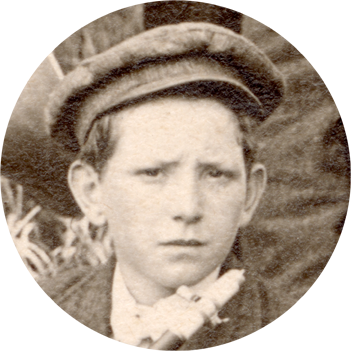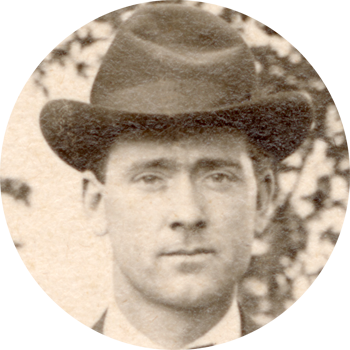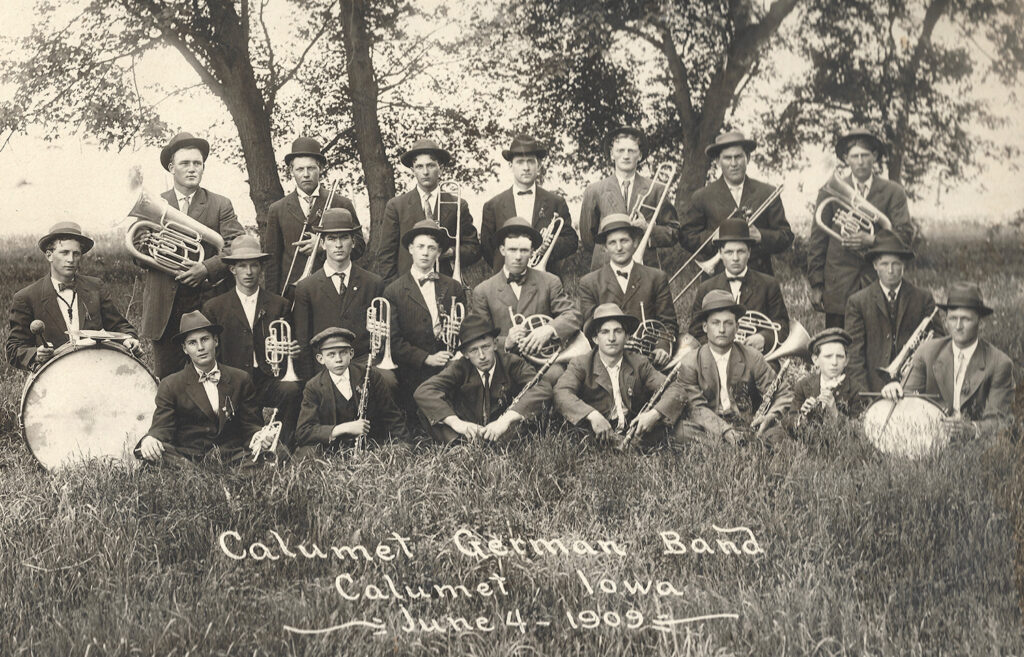Consider a surprising irony.
Of the 22 boys and young men in the 1909 Calumet German Band photo, little Newell Bidwell — the youngest, at age 12 when the photo was taken, who had every expectation of living a long and full life, and perhaps outliving his older bandmates — was the first to die. In only nine years, Newell would succumb to the great 1918 flu epidemic, passing away 17 days before his 22nd birthday.
But the oldest of these fellows, band director Ralph Langley, already 28 at the time of the photo, not only lived the longest life but also outlived every other bandmate except one, dying at the advanced age of 97. The juxtaposition of these unexpected lifespans puts the lie to actuaries’ predictions.
Surely Ralph Langley had no close awareness of the life events and then the successive passing of the band members he had briefly led. He lived a busy life, working for decades as a printer for the Primghar Bell, then retiring to California and keeping up with the lives of his children, grandchildren, and great-grandchildren. Yet the decades he spent in O’Brien County, Iowa, must have exerted a pull. He returned several times to visit family members. And he and his wife Bessie chose to be buried not in California but in Primghar, in Pleasant Hill Cemetery.
Newell Bidwell is buried in Sutherland, in Waterman Cemetery.
The two resting grounds, Pleasant Hill and Waterman, are 17 miles from each other. Midway between them — somewhere in a field near Calumet — is the location of the Calumet German Band photo. Today, the field is most likely producing corn and soybeans each year for export to the world beyond. Nothing marks the spot. But the field, and the soil, and the roots, retain deep, resilient memories. Memories even of a summer day in 1909.



